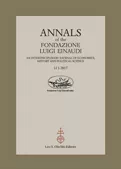It has been recently noted a new pluralistic tendency within mainstream economics, purportedly characterized by an eclectic attitude towards some traditional tenets of neoclassical economics. Anyway, mainstream literature continues to rely on the appropriateness of partial equilibrium analysis and on a comparatively intensified engagement in applied economics. It is my contention here that any appraisal of the (supposed) new mainstream pluralism cannot abstain from a careful discussion of the somewhat problematic consequences of both these prominent features.



